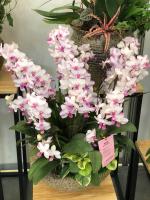How Do You Trim Your Pot Plant
Introduction
If you want your pot plant to look healthy and attractive, trimming it regularly is essential. Proper trimming will not only improve its appearance, but also promote healthy growth and avoid any problems such as disease or insect infestations. In this article, we will take a closer look at how you can trim your pot plants correctly to ensure they thrive.
Tools You Will Need
To start trimming your pot plant, you will need a few essential tools. Firstly, you will need a pair of high-quality pruning scissors or shears. They need to be sharp and clean to ensure a clean cut. You will also need a small saw or pruning knife for larger branches or stems. Finally, prepare a small container filled with rubbing alcohol and a clean cloth for disinfecting your tools between cuts.
How To Start Trimming
Before starting to trim, it is important to note that pot plants should only be trimmed when they are healthy and well-established. Trimming a sick or weak plant could cause damage and reduce its chances of recovery. Start by removing all dead or yellowing leaves first. These leaves do not contribute to the plant's health, and in fact, can create a breeding ground for pests and diseases.
Next, trim any excessively long branches or stems that may need to be cut down. Remove the branches that grow too close to each other as they can cause rubbing, which can damage the plant's surface and make it vulnerable to infections. Always make clean cuts close to the base of the stem to ensure quick and clean healing. Be mindful not to cut too much at once as this can reduce the plant's ability to grow and recover.
How To Trim Different Types Of Plants
Different types of pot plants require different trimming techniques. Woody plants, such as shrubs and trees, require trimming of dead or dying branches/canopy, while herbaceous plants (those that do not contain woody stems) require simple pruning to remove dead or damaged stems or leaves. For flowers or fruit-bearing plants, it is essential to remove any fruiting or flowering stems once fruits or flowers begin to wither, as it will encourage new growth, ensuring both are healthy and abundant.
When To Stop Trimming
Once you have finished trimming your pot plant, give it some time to recover and regrow. It is normal for plants to experience some degree of stress after trimming. Observe your plants to see how they react after trimming, as some may require more care than others. As a general rule of thumb, try not to trim more than 30% of the total plant at once to avoid over-stressing it. Repeat the process in a few weeks or months, as required.
Conclusion
Trimming a pot plant can be a great way to keep it healthy and thriving, but it can also be a bit intimidating. By following these simple guidelines, you can make sure that you are trimming your pot plants correctly and effectively. Ensure you are using the right tools, recognize the different types of plants you have and tailor your trimming, and observe the reaction of the plants to know when to stop. With these tips in mind, you are sure to have beautiful plants and a beautiful garden.

 how many times do yo...
how many times do yo... how many planted tre...
how many planted tre... how many pine trees ...
how many pine trees ... how many pecan trees...
how many pecan trees... how many plants comp...
how many plants comp... how many plants can ...
how many plants can ... how many plants and ...
how many plants and ... how many pepper plan...
how many pepper plan...
































